If you're new here, you may want to subscribe to my RSS feed. Thanks for visiting!
By Daisy Luther
You probably spend a lot of money making meals from pure, whole ingredients. That kind of food isn’t cheap. But if you are cooking it in low-quality – even toxic – cookware, you might as well eat ramen noodles.
For many people, the pots, pans, and skillets they use on a daily basis are made of materials that could have an adverse impact on their health. Scientists have known that the toxic metals in our cookware could cause health issues since the 1970s, but the manufacture and sale of these dangerous products have been able to go on relatively unchecked.
Here are the kinds of cookware you should avoid.
First, let’s go through some of the most common types of cookware that you should consider removing from your kitchen – and why they could be hazardous to your health.
Non-Stick Cookware
Remember when Teflon and other non-stick cookware came out and it was trumpeted as the healthiest way to cook your food? It was promoted because you didn’t have to oil the pan before cooking eggs or sauteing up some veggies. This was in the midst of the whole “fat is evil” phase that America went through. (That, too, has been largely disproven.)
Unfortunately, that non-stick coating has its own danger, and it’s far more serious than the few extra pounds that you may be worried about.
Perfluorooctanoic acid (PFOA) was commonly used in the manufacture of non-stick Teflon pans. That is what the coating is made of that keeps food from sticking.
PFOA has been linked to an increase in liver and pancreatic tumors in lab animals as well as testicular tumors and reduced fertility. PFOA is a chemical used in the manufacture of Teflon and is thought to be one of the biggest dangers associated with non-stick cookware.
What’s even worse?
As far back as 2006 the Environmental Protection Agency discussed banning the use of these chemicals in cookware, but companies were still allowed to sell products containing them until 2015.
If the cookware you have at home is pre-2015, there’s a pretty good chance that they contain some of these health-harming chemicals. Evidence suggests that after just a few minutes on a stove that the pans can get hot enough to cause fumes to be released from the non-stick coating. The fumes are so toxic that they can kill birds if you happen to have a feathery pet in the kitchen when you cook with them. Once there’s even a small break in the surface the non-stick coating can actually start to break down and get into your food. You may be eating the chemical-laden surface.
Cheap Stainless Steel
Did you ever notice how stainless steel cookware can be really cheap or really expensive? The cheap stuff is often mixed with alloys like nickel and chromium. Nickel and chromium can leach into your food, particularly if the food is acidic.
Chromium and nickel can both cause dermatitis in some people. Sensitivities to both metals can build up in susceptible people, and this seems to become more likely when acidic foods such as tomato sauce are cooked in such vessels repeatedly.
Harsh scouring that roughs up the surface of your cookware can make it more liable to leach bad stuff into your food.
“Green” Recycled Cookware
Even more horrifying are “green” products that are made from recycled metals. You have no idea what these metals were previously used for, but it is entirely possible you could be inviting a whole host of unknown toxins into your dinner. Some of it could even be radioactive.
The Department of Energy has a problem: what to do with millions of tons of radioactive material. So the DOE has come up with an ingenious plan to dispose of its troublesome tons of nickel, copper, steel and aluminum. It wants to let scrap companies collect the metal, try to take the radioactivity out, and sell the metal to foundries, which would in turn sell it to manufacturers who could use it for everyday household products: pots, pans, forks, spoons, even your eyeglasses.
You may not know this, but the government already permits some companies under special licenses, to buy, reprocess and sell radioactive metal: 7,500 tons in 1996, by one industry estimate. But the amount of this reprocessing could increase drastically if the DOE, the Nuclear Regulatory Commission (NRC), and the burgeoning radioactive metal processing industry get their way. (source)
Copper Cookware
Copper pans raise yet more issues.
Copper is an excellent heat conductor, but it’s toxic, so pans need to be lined with high-quality stainless steel. (We’ll talk about how to test your stainless steel below.)
Copper toxicity is more likely to occur when acidic foods are cooked in copper pans that aren’t lined with high-grade stainless steel. The acid in the food dissolves the soft metal allowing it to leach into the food in the pot. Symptoms of copper toxicity include nausea, vomiting, and diarrhea.
Copper pans are gorgeous, but a lot of work to keep clean and polished. They are also very expensive.
Aluminum Cookware
Aluminum is another metal that can leach into your food and cause health issues. Aluminum isn’t magnetic, so the magnet test (discussed in the shopping guide below) won’t help here.
The small amount of aluminum that is naturally present in our diets is nothing to worry about. It is excreted by the body with no issues.
Excess load is something entirely different, and if more aluminum is ingested than can be excreted, then it’s deposited in bone, brain, liver, heart spleen and muscle. If it builds up to excessive levels, it can cause illness and even death.
Aluminum has been connected with encephalopathy (brain malfunctions) in patients with excess load. Although the changes in the brains of these individuals are different to the malfunctions within the brain caused by conditions like Alzheimer’s, research is ongoing. Aluminum in excess can also cause a change in the permeability of cells, which can block the movement of nutrients in and out of cells. It has also been linked to a reduction of protein synthesis within the cells. (source)
Shopping Guide: The Healthiest Cookware Choices
Okay, now you know what you shouldn’t use. But what does that leave us with?
High-Quality Stainless Steel
If you are going to buy stainless steel pots and pans, they need to be good quality. Decent stainless steel pans don’t come cheap but buy a good set, and it will last you a lifetime.
[thrive_text_block color=”teal” headline=”The Magnet Test”] Stainless steel is not magnetic whereas nickel and chromium, both common additives to cheaper stainless steel pans, are. So, whip out a small magnet and try and make it stay on the side of the pans you are using and see what happens. If you plan to buy your stainless steel cookware online, go to a store first to check that the brand you are buying doesn’t contain excessive amounts of nickel and chromium.[/thrive_text_block]
The best stainless steel pans to buy are those with the least chromium and nickel content. Stainless steel is often referred to as 18/8 or 18/10. This is supposed to refer to the amount of chromium and nickel the pans contain. In reality, there is no difference:
The difference between 18/8 and 18/10 stainless steel is in name only, as the two steel alloys are actually completely identical. The numbers in 18/8 steel specify the amount of chromium and nickel used in making the steel. 18/8 steel contains 18 percent chromium and 8 percent nickel. 18/10 stainless steel is a marketing gimmick that suggests a more rust-resistant steel, while in reality 18/10 stainless steel contains the same amounts of chromium and nickel as 18/8 steel.
18/8 is largely an older designation, and most steel producers now refer to this steel as 403 stainless steel. (source)
One rating to look for is the series of the steel. The number can be found stamped on the bottom of the cookware. This number indicates the durability and resistance of the material to rust and corrosion, and this resistance is due to how much chromium and nickel the alloy contains.
- 304 series: This alloy also contains no more than 0.8% carbon and at least 50% iron. The presence of a bit more nickel enhances the resistance to corrosion.
- 316 series: This is the more expensive stainless steel because the alloy contains molybdenum or titanium. It is also known as marine grade stainless steel or surgical grade stainless steel. This is the Cadillac of stainless steel cookware, but you will pay a Cadillac price for it too. And by Cadillac, I mean that your basic set could be well over a thousand dollars. Watch for sales if you have your eye on a set like this. Because of the extreme price, I didn’t put any of these in the recommendations below.
- The 400 series is less expensive. It is almost entirely free of nickel (with a maximum of .75%), but this causes it to be more corrosive, and the cookware will eventually rust. 400 series stainless steel is of lower quality and is magnetic.
- The 200 series is the cheapest. It contains manganese instead of nickel and will rust.
Stainless steel in the 300 series is not magnetic.
Good quality stainless steel cookware often has a copper or aluminum base for even heating. Don’t worry about that as long as it is not the part that touches your food.
There is a learning curve to cooking in stainless steel – proceed carefully or you’ll burn everything that isn’t boiling in water. But once you get the hang of it, these will be the vessels you reach for every day.
Stainless steel is non-reactive, so you can cook any kind of food in it. Learn to clean it without harsh, abrasive methods to maintain a smooth surface. High-quality stainless steel is very expensive but will last long enough for you to hand it down to your children.
- All-Clad 10 Piece Cookware (this made-in-the-USA set is the best quality in the list but a very big investment)
- Calphalon Classic 10-Piece Set (well-priced)
- Cuisinart 13-Piece Cookware Set (This set is about $400 less on Amazon than it is in department stores)
Cast Iron
Cast iron pans are heavy in use and take some maintenance. They can leach some iron into your food, but the amount is so small that it is not considered harmful to human health – and can actually be beneficial.
You do have to look after it well, though. Cast iron cookware needs seasoning, which is a process that will prevent your food from sticking and impede the surface from pitting. Proper care will help your cast iron last a lifetime.
Cast iron is very heavy, so be aware of the weight of the pans to be sure that you won’t struggle to lift them when they are full. A 12″ cast iron skillet can weigh 8 pounds before you add the contents, and a Dutch oven is around 15 pounds empty. This means that if you have mobility issues or chronic pain, it may not be the best choice for you.
Cast iron is reactive and shouldn’t be used with acidic foods. You can use cast iron on the stovetop, in the oven, or over a fire.
I have a Dutch oven, a skillet, and a grill pan. (Can you tell that I absolutely adore cast iron?) My favorite brand is Lodge, which is preseasoned and made in the USA.
- Lodge 5-Quart Dutch Oven
- Lodge Enamel-Coated 6-Quart Dutch Oven
- Lodge Cast Iron Grill Pan (Nice for burgers or steak)
- Lodge 12-Inch Skillet
Glass
Glass is chemically inert, which means nothing should leach into your food.
There is some danger of lead in ceramic glazes and some “food contact glass cookware.” Without access to a lab full of equipment, it would be difficult to know if you have toxic ceramic and glass cookware. The US National Library of Medicine issued a warning in 2012 relating to some products imported primarily from Poland. These items also contained cadmium. The only safe way to know for sure is not to buy it unless you know the country of origin has outlawed the addition of lead and cadmium to cookware.
This is yet another excellent reason to buy products made in the USA – that way you know that you and your family are safe from cookware containing lead.
Glass cookware is safe on electric stovetops, in the oven, and in the microwave. Keep in mind that glass cookware should not be used on gas stoves and will shatter if you go directly from hot to cold (like putting a hot glass saucepan in a sink of water to soak.) Some companies say that their products will withstand the sudden changes in temperature, but I wouldn’t risk it.
Good quality glass pans like these will last for a long time if you take care of them and avoid the dangers of shattering. One downside is the relatively high price – about $40-50 for a pot with a lid.
Ceramic Coated Non-Stick Cookware
Taking the place of the dangerous non-stick cookware is ceramic coated cookware. The coating material effectively seals the metal to prevent chemicals from leaching into the food cooked in it.
Now, technically this cookware should be as safe as ceramic ovenware…but is it? Ceramic coatings are not that thick, but they are inert if they are from a reputable company. BUT if there is the slightest exposure of the metal underneath the ceramic coating, then you’re back to a situation in which chemicals can leach from the metal into the food. Deep scratches, chips and other damage would make the pan unsafe, in my opinion.
According to the website Cookware Advisor, the good quality ceramic-coated cookware will not emit toxic fumes even if heated to very high levels, contains no toxic chemicals, and is made of an inorganic, sand-like mineral applied to the inside of metal cookware using a Sol-gel process. Dr. Andrew Weil also approves of the ceramic-coated cookware.
One caveat about the ceramic coated cookware: the coating is very delicate. I got a set for Christmas a couple of years ago and was disappointed at how easily the surfaces scratched, even though I was careful to use only approved utensils. Because of this, I wouldn’t purchase an incredibly expensive set and now only have one ceramic coated skillet for quickly cooking eggs or pancakes. Below, I’ve recommended a couple of less expensive sets and a couple of higher quality skillets.
- WearEver Pure Living 10 Piece Cookware
- GreenLife 14 Piece Cookware
- GreenPan 10″ Frying Pan
- GreenLife 12″ Frying Pan (I have this one and am very happy with it.)
Don’t panic…
You may read this article in horror and say to yourself, “Oh my gosh, I’m using toxic cookware! I’m poisoning my family!”
Stop.
Most of us can’t afford to replace everything at the same time, and the high-quality pieces are investments. While I recommend you get rid of any Teflon ASAP, you don’t have to replace every single thing in your kitchen all at once.
Prioritize by thinking about what pieces of cookware you use the most. For me, that is a skillet and a 3-quart saucepan. with those two items, I can make nearly everything that we normally consume. So, if I was revamping my cookware, I’d start out with a purchase of those single items. This may be different for you.
If your cookware is in the “good” category but maybe isn’t the very best, remember, it’s still good. You are far and away better off than the folks using aluminum and Teflon.
You didn’t stock up your entire kitchen in one day – you’ve built it over a period of years. Give yourself at least a few months to improve the cookware that you are using. 🙂
Stay tuned…we’ll finish detoxing your kitchen with upcoming articles on ovenware and food storage solutions in the next Whole Home Detox articles.
[thrive_custom_box title=”Check Out the Other Articles in the Whole Home Detox Series” style=”light” type=”color” color=”#bcbcbc” border=”#1dafba”]
Home Detox: How to Rid Your Environment of the Sources of Chronic Illness
Are These Dirty Little Secrets Lurking in Your Toxic Laundry Products?
The 10 Safest Laundry Detergents (And Brands to Avoid)
The Safest Dryer Sheets and Fabric Softeners (and the ones to avoid)
[/thrive_custom_box]

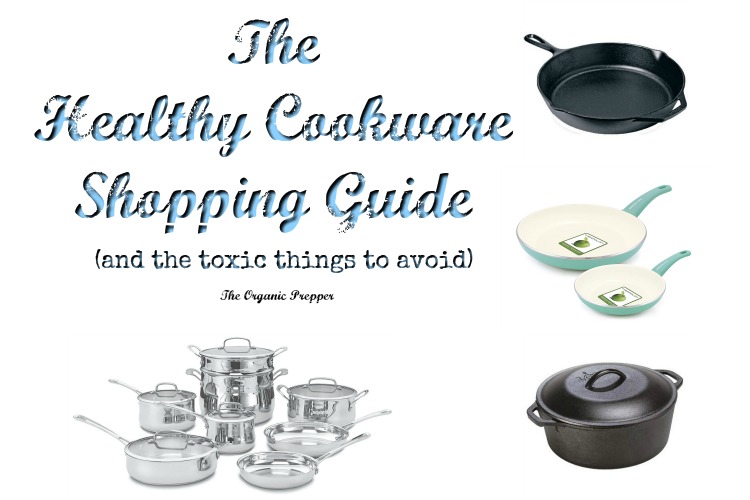
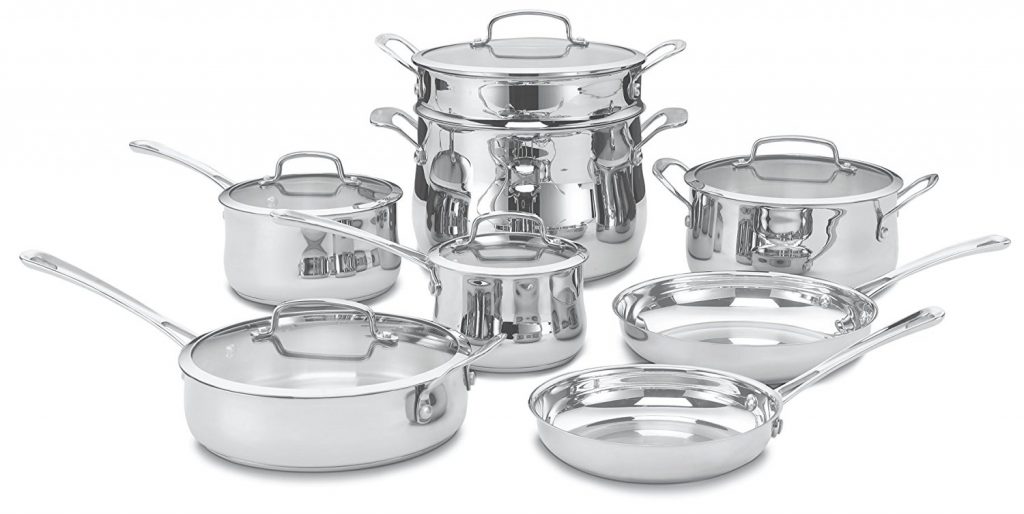
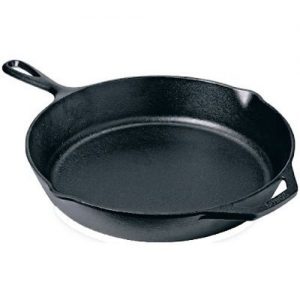
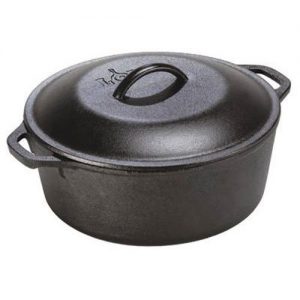
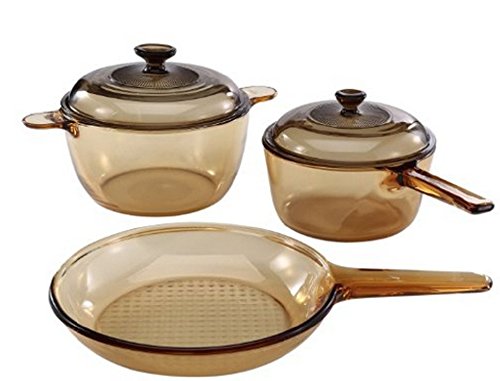
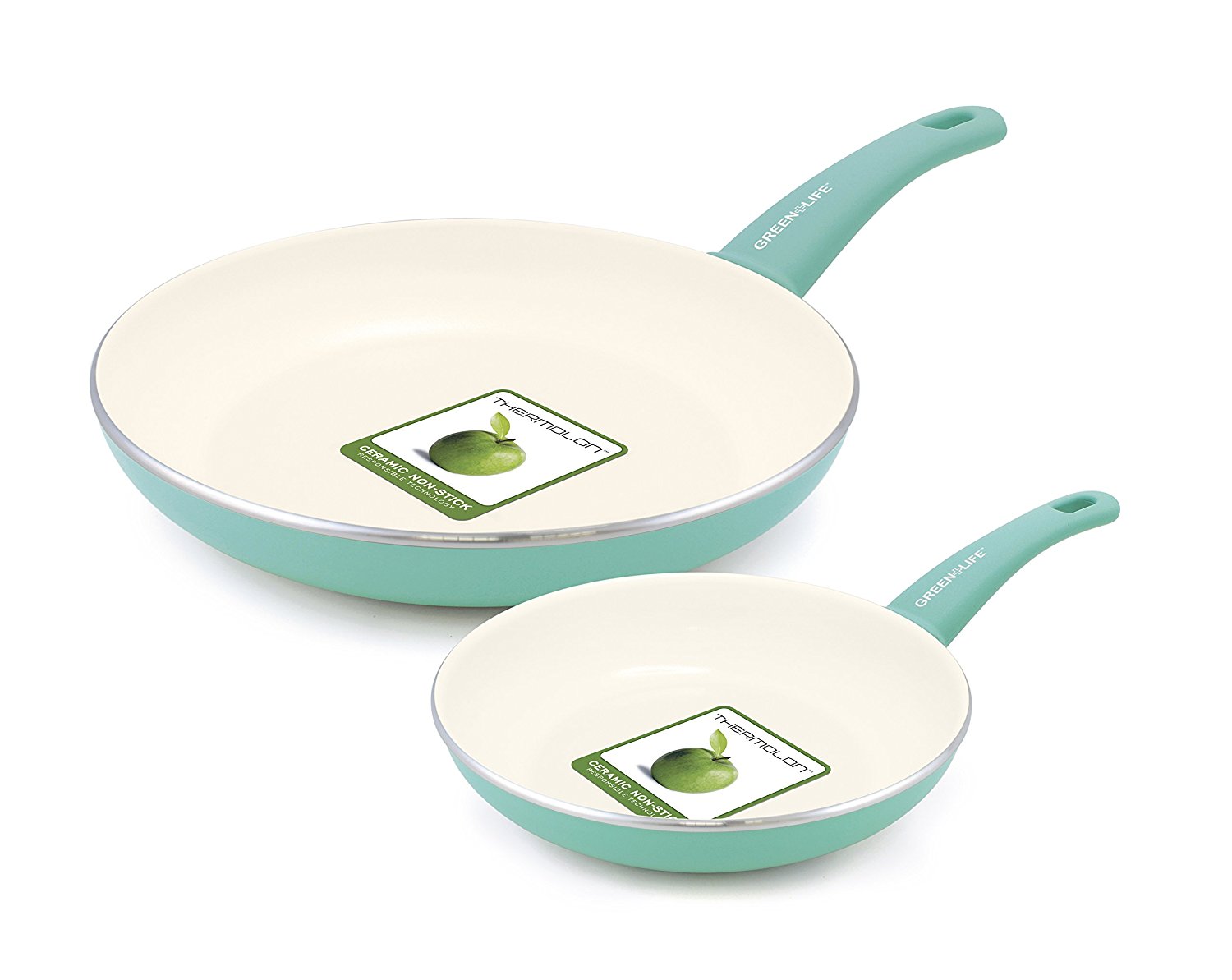














11 Responses
Very informative article.. What should we use for baking specially for pizza,cookie and cakes.Thanx
Zee – I have a bakeware article coming up next week 🙂 It was just too much info for one article.
Much thanks for this…
I passed this on to my 3 daughters and posted the link on “Gab” @DaveForTexas with the usual “via @daisyluther”. And I’ll post on Pinterest at “Dave’s Cookin”.
I’m gonna have to get some new pots & pans!
☕????
Dave
What cookware
Found this ceramic ,coated with greblon c3, fry pan made of heavy Guage die cast aluminum free of PTFE,PFOA& APEO Made by Cate-maker. My question,is this a safe pan to use?
Yes, that one should be great!
Be extremely careful not to damage the ceramic coating, though, because once you do, the aluminum will be exposed.
Well, looks like two of the three stainless steel pans that I have are not magnetic. The one big pot (which was very cheap at “B– L—“) is magnetic and doesn’t have a thick bottom. I only used the pot a couple times because I couldn’t get it to boil water very well. Guess I’ll keep it around for an ash can when we get a wood stove. =) The one quart pan (which was my grandmother-in-law’s old pan) doesn’t have any numbers on it, has a thick bottom, and is not magnetic. My 4 quart pan from “WM” (wasn’t cheap, but not pricey either) is a T-FAL and is magnetic on the thick bottom but not magnetic in the pan. It has some numbers on the bottom (89 205 4217); I’m assuming it’s a “200” series from the numbers.
I checked our “silverware” too… All magnetic; even the “good” stainless steel tableware! =( My husband mentioned real silver tableware the other day… Maybe you’d have some recommendations? =)
You’re right: there is definitely a learning curve with steel and iron pans! I still burn stuff regularly. lol Looking forward to your article on baking dishes. =) What are your thoughts on enamel ware? I have one big pot that I use all the time (we have a big family).
Thanks for the info!
This is absolutely great. I did send you an email, but I had to comment also. I’m so glad I found such a knowledgeable person on how to get rid of toxins in your home and body etc… Every article I’ve read so far on your website has been eye opening and has helped me and my family already. Thank you for helping people/families like me who just don’t know where to start. I look forward in following you throughout 2018!!
Thank you for your kind words, Bridget! I’m really glad the article was helpful. 🙂
PTFE (Teflon) is possibly the most inert compound known to man. Plus it’s non-stick. But, and this is a major but, it cannot be heated to more than 500° C, when it breaks down and releases all sorts of nasty chemicals. 200° C is more than enough to cook most foods.
Now look at your typical cook—taking that Teflon pan and putting it on a red hot burner (electric) or a large flame (gas) then wondering why the pan degrades. Maybe one in a hundred properly uses a Teflon pan so that it doesn’t overheat. The problem is not the Teflon, but the misuse of Teflon and almost everyone misuses it. Misuse it once, and it should be trashed. The almost universal misuse of Teflon is good enough reason not to have it.
Glassware, including Pyrex and other high quality glass, does leach chemicals. That’s why things stored in glass get that “glassy” taste. The amount of chemicals leached from glass may be so low as to pose no danger, but contrary to belief, glassware is not totally inert. For quick use, such as a measuring cup, the amount of leaching may not be measurable.
Ah, the things one learns when studying things like organic chemistry and plant physiology.
Personally, I have a small, high quality stainless saucepan and a small cast iron fry pan as my main stove-top cookware. I don’t cook that much. I have a Chinese aluminum steamer where food doesn’t touch the aluminum, which takes the place of baking. I hardly ever bake. Unless a person is a gourmet cook, he seldom needs more than a few pans for cooking.
I am struggling to find reliable information on whether or not baking paper is safe to use. It is so convenient as it helps you avoid sticky mess on your oven dishes but I do not know if it is safe or not.